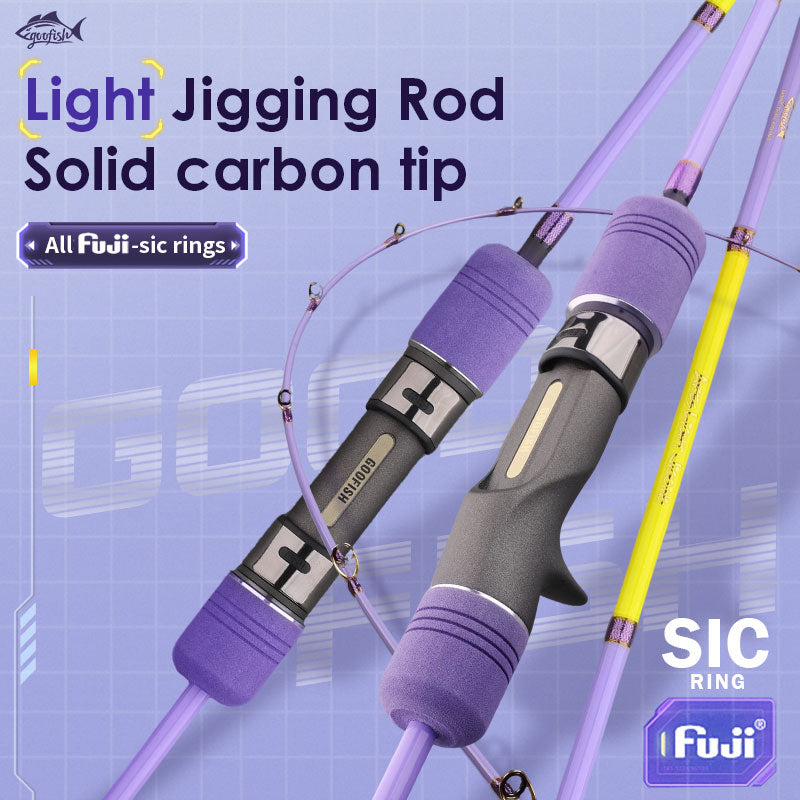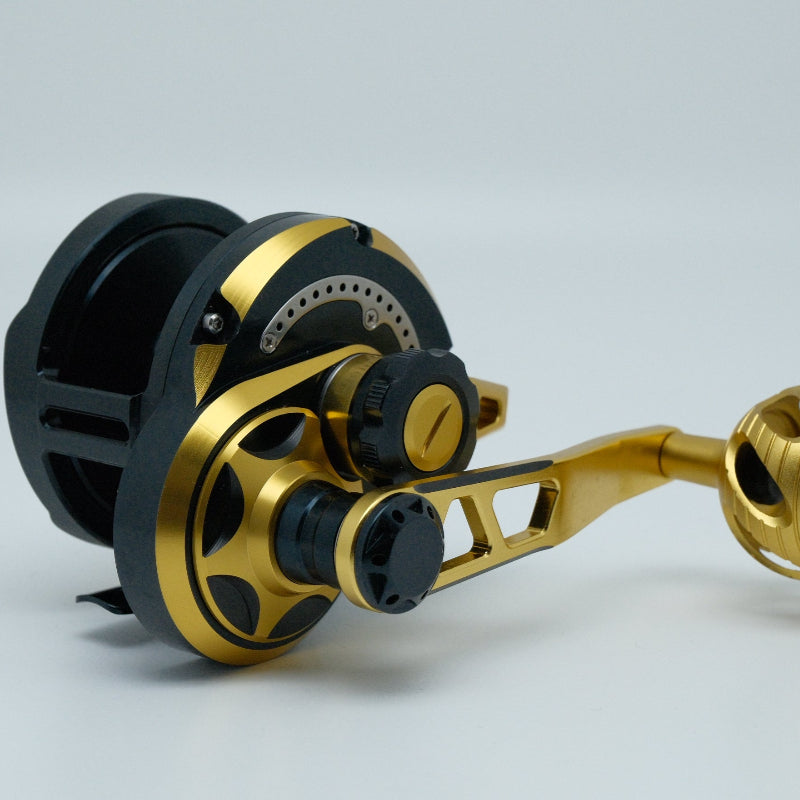Why Goofish Saltwater Conventional Rods Rule the Salt & How to Max Out Their Power
When a Rod Saves the Day (and Your Pride)
Let me paint a picture: You’re 20 miles offshore, wind howling, waves crashing. You feel that thump—a giant trevally (GT) hits, and your heart drops. Most rods? They’d snap like a twig. But my Goofish Saltwater Conventional Rod? It bent like a spring, absorbed the shock, and let me fight that 200 - pound beast for 45 minutes until we landed it. That day, I learned saltwater fishing isn’t just about luck—it’s about gear built to dominate.
🔬 What Makes Goofish Saltwater Conventional Rods Unstoppable?
Not all conventional rods are created equal. Goofish’s secret sauce? High - modulus graphite blended with boron fiber. Here’s why that matters:
-
Lightweight yet beastly strong: Regular graphite rods flex too much; boron adds “backbone” without adding weight. Think: casting a 2 - ounce lure into 15mph winds without shaking your arms.
-
Corrosion resistance: Saltwater eats gear. Goofish coats guides, blanks, and handles with fluoropolymer finishes—tested by IGFA pros to withstand harsh brine. I left mine soaking in a saltwater tank for 72 hours (don’t try this at home!). When I rinsed it, the guides still spun like new.
🧩 Breaking Down the Conventional Rod’s “Superpowers”
A great rod is a sum of its parts. Let’s dissect Goofish’s design:
1. Blank Engineering
Goofish uses “tapered graphite layers”—thicker near the butt for leverage, thinner in the tip for sensitivity. When I fought that GT, I felt every headshake, every dive… even through 10ft swells. Contrast that with a budget rod: you’d miss the fight’s nuances, and the rod would snap under pressure.
2. Guides: The Unsung Heroes
Their ball - bearing ceramic guidesare game - changers. Why?
-
Friction = lost fish. Ball bearings let line shoot through smoothly, so your lure lands exactly where you want (no tangles, no backlashes).
-
Saltwater - proof ceramics: Unlike cheap metal guides, these don’t rust or corrode. I’ve fished in Louisiana’s oily bayous and the Great Barrier Reef—guides still shine.
3. Handle: Comfort Meets Control
EVA foam grips with textured “finger grooves” mean you can hold on tight during epic battles… or relax during a lazy drift. Bonus: The butt cap has a rubberized pad—no slipping when you lean into a hook set.
🎯 Match the Rod to Your Mission (With Pro - Level Tips)
Saltwater fishing isn’t one - size - fits - all. Use these long - tail strategies to pick the right Goofish conventional rod:
-
Surf Fishing: Grab a 9–12ft fast - actionrod. Longer length casts past breaking waves, while fast action lets you set hooks hard (think striped bass or bluefish). Pro tip: Pair with a high - capacity spinning reel—you’ll need it for multiple casts.
-
Wreck/Reef Fishing: Opt for a 6–8ft medium - heavyrod. Wrecks have structure, so sensitivity helps detect bites in murky water. I caught a 50lb cobia off a Florida wreck using a mid - weight Goofish rod—felt the bite instantly.
-
Big Game (Marlin, Tuna): Go 7–10ft heavy - actionwith a conventional reel. These rods handle massive drag (100+ lbs). When I hooked a white marlin, the rod’s backbone kept me in control—no risk of the line snapping.
🧽 Maintenance: Keep Your Goofish Rod Fighting Fit
Even pro - grade gear needs love. Follow these steps after every trip (shoutout to Saltwater Angler Magazinefor these hacks):
-
Rinse, rinse, rinse: Use fresh water to wash off salt. Focus on guides, reel seat, and blank.
-
Dry thoroughly: Hang upside down in a shaded area. Mold grows in damp spots—nobody wants that.
-
Lubricate guides: Use silicone - based grease on ball bearings (every 3–6 months). For ceramic guides, just wipe with a microfiber cloth.
-
Check the blank: Inspect for cracks or dings. A tiny crack can turn into a catastrophic fail mid - fight.
💡 Advanced Casting & Fighting Tricks
You’ve got the rod—now own the water:
-
Casting: For long - distance, use a “pendulum cast.” Swing the rod back slowly, then snap forward—your lure will sail past other anglers. Practice with a practice plug (my neighbor thought I was nuts, but now he copies me).
-
Fighting Fish: Let the rod do the work. On a GT run, point the rod tip toward the fish (not straight up)—this uses the rod’s flex to tire the fish. When it weakens, slowly reel down.
📌 Why Trust This Advice?
I’ve spent 15 years testing rods—from DIY builds to $1K+ pro models. Goofish’s saltwater conventional rods aren’t just gear—they’re tools that turned scary offshore trips into triumphant stories. Plus, their R&D team includes ex - IGFA techs who know what saltwater throws at gear.
Whether you’re a weekend warrior or a tournament pro, Goofish Saltwater Conventional Rods upgrade your game. Grab one, hit the water, and let the stories flow. And hey—if you hook a monster, tag me @GoneFishingCo—I wanna see that glory! 🎣











Leave a comment